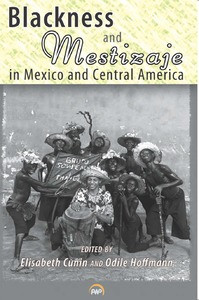Designing Afro-Latino Curriculum for Self-DeterminationPosted in Articles, Latino Studies, Media Archive, Social Justice, Teaching Resources, United States on 2015-10-29 00:44Z by Steven |
Designing Afro-Latino Curriculum for Self-Determination
Zambombazo
2015-10-23
Introduction
During the 2015 Afrolatino Festival of New York in a panel discussion on the contextualization of blackness, William Garcia briefly mentioned working to implement Afro-Latino curriculum in schools, which greatly intrigued us. Thus, we reached out to him to learn more. His amazingly detailed and extensive response, published below, recommends “looking for solidarity between oppressed people in the United States but also involves questioning African American and Latino nomenclature”. Prior to beginning, it is noteworthy that William Garcia describes these topics as “difficult conversations”. Thus, we encourage critical analysis, respect, and “productive dialogues with parents, students, communities, family members, and friends”, perhaps along with cultural resources from our Afrodescendent Population in Latin America unit.
Designing Afro-Latino Pedagogy for Self-Determination (by William Garcia)
“American Negro must remake his past in order to make his future.” —Arturo Alfonso Schomburg (1874-1938)
With an increased media attention to police violence there is an emergence of educators utilizing Black Lives Matter as a movement to create and develop curriculums of social justice (Rethinking Schools 2015). The recent article “Black Students’ Lives Matter: Building the school-to-justice pipeline” (2015) posits:
For the past decade, social justice educators have decried the school-to-prison pipeline: a series of interlocking policies—whitewashed, often scripted curriculum that neglects the contributions and struggles of people of color; zero tolerance and racist suspension and expulsion policies; and high-stakes tests—that funnel kids from the classroom to the cellblock. But, with the recent high-profile deaths of young African Americans, a “school-to-grave pipeline” is coming into focus.
But yet what does it mean to be black in the United States? Am I as an Afro-Latino allowed to call myself Black? Who gets to be African American?…
…Fixed categories of blackness do not allow Afro-Latinos to identify and explore their identities, which creates an invisibility of how policy, especially in the realm of education, has not been developed to attend to their academic needs. There is a need to redefine what it means to be black in this country [Editor’s Note: See Soulville Census: Learning about the Nuances of Blackness]. Essentialist forms of blackness in the U.S. make it difficult for students to relate to the way that we can understand race critically and politically as well as teaching in ways that are culturally relevant for them….
Read the entire article here.



